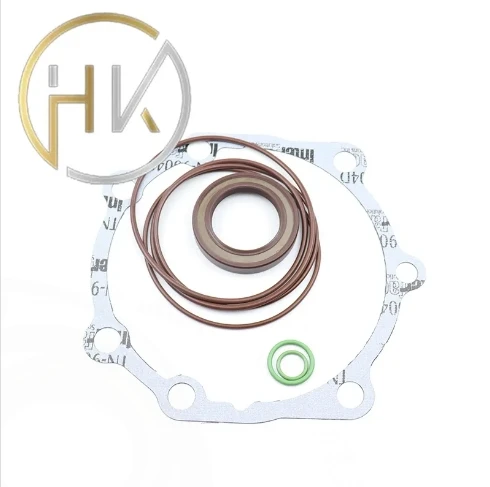10 月 . 22, 2024 06:09 Back to list
Understanding Motor Seals and Their Importance in Mechanical Systems
Understanding Motor Seals Importance, Types, and Maintenance
Motor seals play a crucial role in ensuring the efficient functioning of various machinery and vehicles. Often overlooked, these small components are integral in preventing leaks and contamination, thus safeguarding the internal components of motors and other equipment. In this article, we delve into the importance of motor seals, the different types available, and maintenance practices to prolong their lifespan.
Importance of Motor Seals
The primary function of motor seals is to contain lubricants and coolants while preventing the ingress of dirt, dust, and moisture. In motors, especially in automotive applications, effective sealing is essential. It ensures that lubricants remain within the system, minimizing friction and wear on moving parts. Furthermore, seals protect the motor from environmental factors that can lead to premature failure.
Without adequate sealing, motors can face numerous issues, including reduced efficiency, overheating, and increased wear and tear on components. This not only leads to costly repairs or replacements but can also compromise the reliability and safety of the machinery.
Types of Motor Seals
Motor seals come in various types, each designed to meet specific application requirements. Here are some common types
1. Rotary Seals These seals are used in applications where the shaft rotates continuously. Rotary seals create a tight seal between the rotating shaft and the stationary housing. They are commonly found in automotive engines, gearboxes, and pumps.
2. Static Seals Unlike rotary seals, static seals are used in applications where there is no movement between the surfaces. Gaskets and O-rings are classic examples of static seals, commonly used to seal cylinder heads, valve covers, and other stationary components.
3. Lip Seals Lip seals are a particular type of rotary seal, featuring a flexible lip that conforms to the surface of the shaft, providing a tight seal. They are widely used in transmissions and differentials.
motor seal

4. U-Cups Often utilized in hydraulic and pneumatic applications, U-cups are designed to seal pressure in one direction. Their unique shape allows them to withstand high pressures while preventing leaks.
5. Mechanical Seals Commonly used in pumps, mechanical seals consist of two faces that run against each other, preventing leakage of the fluid being pumped. They are effective in high-pressure and high-temperature applications.
Maintenance of Motor Seals
To ensure optimal performance and longevity of motor seals, regular maintenance is essential. Here are some key practices to consider
1. Regular Inspection Regularly inspect seals for signs of wear, cracking, or deterioration. Catching issues early can prevent significant problems down the line.
2. Proper Installation Ensure seals are installed correctly, as improper installation can lead to premature failure. Use the right tools and techniques to avoid damage during installation.
3. Use Quality Products Opt for high-quality seals that are suited for your specific application. While cheaper alternatives may be tempting, they often lead to increased maintenance costs in the long run.
4. Avoid Contaminants Keep the sealing area clean and free from contaminants. Dirt and debris can compromise the integrity of the seal, leading to leaks.
5. Monitor Operating Conditions Be aware of the operating conditions of the motor. High temperatures and pressures can impact seal performance, so make adjustments when necessary.
In conclusion, motor seals, though small, are pivotal in maintaining the efficiency and longevity of various applications. By understanding their importance, recognizing different types, and implementing proper maintenance practices, users can ensure their motors and machinery operate smoothly and effectively. Regular attention to these components can lead to a more reliable and cost-effective operation, saving time and resources in the long run.
-
The Power of Advanced Sealing: High-Pressure Solutions for Modern Machinery
NewsOct.29,2024
-
Optimizing Machinery with High-Performance Oil Seals
NewsOct.29,2024
-
Maximizing Machinery Efficiency with Advanced Oil Seals
NewsOct.29,2024
-
Ensuring Equipment Longevity with Quality Oil Seals
NewsOct.29,2024
-
Enhance Equipment Performance with Quality Oil Seals
NewsOct.29,2024
-
Custom Oil Seals for Specialized Machinery Needs
NewsOct.29,2024
-
The Role of Wiper Seals in Dust Sealing and Oil Protection
NewsOct.20,2024
Products categories
















